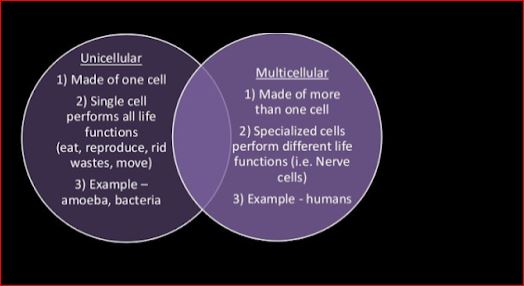What is Difference Between Unicellular And Multi-cellular Organisms?
Before we can determine the difference between unicellular and multi-cellular organisms, it is necessary to understand what each of them is and why they are characterized.

To begin with, a single-celled organism is one that, as the name implies, is composed of a single cell. Although it is difficult to believe, a large percentage of the planet’s living beings can perform all the functions necessary to live with a single cell. Some examples of this type of being are bacteria, amoebas, and ciliates, to name a few. Another characteristic of this type of organism is that they are imperceptible to the human eye, even when we can find them practically in every corner of the planet.
The main difference between unicellular and multi-cellular organisms is that the latter is made up of many cells, although they come from only one until they evolve into a set of these.
In the case of unicellular organisms, their only cell, works hard in the cytoplasm movement, to be able to stay alive, even in spite of the work that this represents, while a multi-cellular organism, makes all its cells work together to be able to form tissues, which in turn will form organs, which will later become complex organisms worthy of study.
Each set of cells within a multi-cellular organism has a designated task in which to work so that the functioning of the body is effective.
In summary, the difference between unicellular and multi-cellular organisms, is the number of cells that each one contains and therefore the way they work, a body with more cells, also has greater needs and is more complex to meet and can depend on other organisms, while a single cell, can survive on its own as well as reproduce and perform all the activities of a living being.
You May Also Interested:
